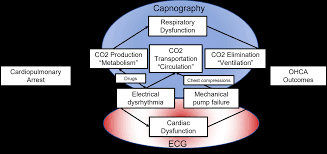The mDOT Center
Transforming health and wellness via temporally-precise mHealth interventions






mDOT@MD2K.org
901.678.1526
901.678.1526








Collaborating Investigator:
Michelle Nasal, The Ohio State University
Funding Status:
NIH/NHLBI
09/01/23 – 08/31/28
Associated with:

Nassal, M. Sugavanam, N., Aramendi, E., Jaureguibeitia, X., Elola, A., Panchal, A., Ulintz, A., Wang, H., Ertin, E.
Proceedings of the 57th Annual Hawaii International Conference on System Sciences, HICSS 2024
January 3, 2024
Artificial Intelligence (AI), cardiac arrest, resuscitation, end tidal capnography, reinforcement learning
Artificial Intelligence (AI) and machine learning have advanced healthcare by defining relationships in complex conditions. Out-of-hospital cardiac arrest (OHCA) is a medically complex condition with several etiologies. Survival for OHCA has remained static at 10% for decades in the United States. Treatment of OHCA requires the coordination of numerous interventions, including the delivery of multiple medications. Current resuscitation algorithms follow a single strict pathway, regardless of fluctuating cardiac physiology. OHCA resuscitation requires a real-time biomarker that can guide interventions to improve outcomes. End tidal capnography (ETCO2) is commonly implemented by emergency medical services professionals in resuscitation and can serve as an ideal biomarker for resuscitation. However, there are no effective conceptual frameworks utilizing the continuous ETCO2 data. In this manuscript, we detail a conceptual framework using AI and machine learning techniques to leverage ETCO2 in guided resuscitation.
This publication proposes a conceptual framework for utilizing Artificial Intelligence (AI) and machine learning to create End Tidal Capnography (ETCO2) guided resuscitation for Out-of-Hospital Cardiac Arrest (OHCA). The aim is to move beyond rigid, fixed-interval resuscitation algorithms by leveraging continuous ETCO2 data as a real-time biomarker, alongside other physiological measurements, to develop personalized, dynamic interventions that are responsive to a patient’s evolving cardiac physiology. This approach seeks to improve the currently static survival rates for OHCA by enabling a deeper analysis of ETCO2 trends in relation to patient characteristics and interventions, potentially revealing “hidden” patterns and allowing for reward-based algorithms to guide optimal treatment strategies.
CP10 seeks to develop personalized interventions by integrating End-tidal carbon dioxide (ETCO2) capnography into Out-of-hospital cardiac arrest (OHCA) resuscitation.
Out-of-hospital cardiac arrest (OHCA) is a dynamic process that requires new interventions to improve outcomes. End-tidal carbon dioxide (ETCO2) measurement is a tool that is widely recognized, easy to use, and can potentially provide real-time insights into ongoing resuscitation efforts; however, it has yet to be applied to individualized medicine. Our overall hypothesis is that integrating ETCO2 capnography into OHCA resuscitation will improve outcomes. Using innovative signal processing and machine learning methods, we will identify a wide range of resuscitation quality characteristics over resuscitation, their relation to individual patient characteristics and predictability of OHCA outcomes. These goals will be accomplished via the following aims: Aim 1. Determine the influence of resuscitation interventions on real-time physiologic dynamics and outcomes in OHCA. Aim 2. Establish the influence of individual patient characteristics on the real-time physiologic dynamics and OHCA outcomes. Aim 3. Develop a novel cardiac arrest resuscitation strategy based upon real-time individualized physiologic dynamics. We will create a large repository of cardiopulmonary resuscitation process data encompassing data from over 5300 adult OHCA. This work will define intra-arrest ETCO2 dynamics over resuscitation to allow for the development of guided resuscitation efforts, and the resultant data will provide a solid foundation for future hypothesis-driven research. Dr. Nassal’s training plan encompasses both formal didactics and experiential training with experienced mentors and collaborators that will develop a skillset in both signal processing and equitable artificial intelligent driven algorithms. The team has extensive experience in using machine learning and multimodal signal processing for classification and predictions in resuscitation. This training program will develop a unique skillset in advanced cardiac signal processing; artificial intelligence, including equitable machine learning processing; and expertise in the application of these skills to develop dynamically guided resuscitation strategies that few other physician-scientist possess.
TR&D3 is collaborating with CP10 to develop individualized digital twin model for the OHCA patient allowing real time interpretation of ETCO2. This will allow simulation of alternative resuscitation strategies (e.g. through optimizing the timing of epinephrine dosing).
CP10 challenges TR&D3 to develop digital twin models of cardiovascular system under stress from a unique field dataset of 2,500 patients in cardiac arrest with ECG, ETCO2, Chest Compression signals collected in the field. While digital twin models have been developed before for cardiovascular system in homeostasis, these are not applicable to patients undergoing cardiac arrest.
TR&D3 will help CP10 in assessing resuscitation intervention strategies using real-time physiologic dynamic and patient specific characteristics through a digital twin model.
You must be logged in to post a comment.

No Comments